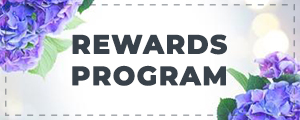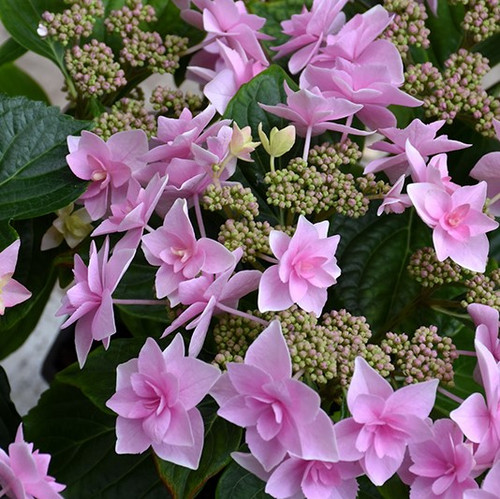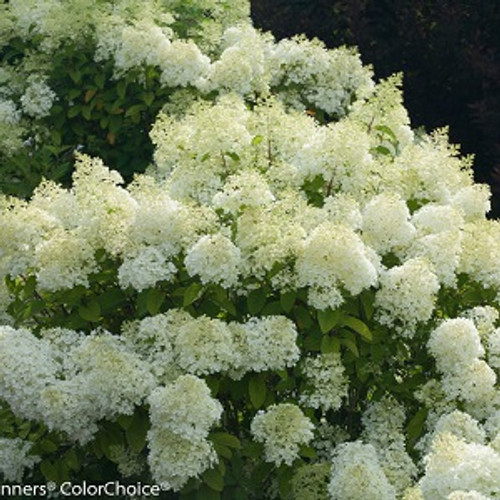| Hydrangea macrophylla 'Lemon Wave' | USDA Zone: 5-9 |
Lemon Wave Hydrangea features bold balls of pink flowers with blue overtones at the ends of the branches from mid summer to early fall. The flowers are excellent for cutting. It has attractive creamy white-variegated deciduous forest green foliage with hints of lemon yellow throughout the season. The glossy pointy leaves are highly ornamental.
Lemon Wave Hydrangea has spectacular and unusual variegated edges that varies between cream and pale-lemon; large pink-blue globe-shaped flowers; somewhat coarse leaves; blooms on old wood so protection of flower buds in winter may be necessary. This Hydrangea is bought for its colorful variegated foliage.
Lemon Wave Hydrangea makes a fine choice for the outdoor landscape, but it is also well-suited for use in outdoor pots and containers. Because of its height, it is often used as a 'thriller' in the 'spiller-thriller-filler' container combination; plant it near the center of the pot, surrounded by smaller plants and those that spill over the edges. It is even sizeable enough that it can be grown alone in a suitable container.
Lemon Wave Hydrangea is recommended for the following landscape applications;
- Accent
- Mass Planting
- Hedges/Screening
- General Garden Use
- Container Planting
Bloom Time: Summer
Common Name: French Hydrangea, Bigleaf Hydrangea
|
Key Feature
|
Light Needs | Landscape Uses |
 |
 |
|
|
|
|
| More About Lemon Wave Hydrangea |
| Height: 3-5 ft |
Spread: 3-5 ft |
Flower Colour: Pink / Blue |
|
Lemon Wave Hydrangea will grow to be about 5 feet tall at maturity, with a spread of 5 feet. It tends to be a little leggy, with a typical clearance of 1 foot from the ground. This shrub does best in full sun to partial shade. It requires an evenly moist well-drained soil for optimal growth. It is not particular as to soil type, but has a definite preference for acidic soils. It is highly tolerant of urban pollution and will even thrive in inner city environments, and will benefit from being planted in a relatively sheltered location. Consider applying a thick mulch around the root zone in both summer and winter to conserve soil moisture and protect it in exposed locations. Note that when grown in a container, it may not perform exactly as indicated on the tag - this is to be expected. Also note that when growing plants in outdoor containers and baskets, they may require more frequent waterings than they would in the yard or garden. Be aware that in our climate, most plants cannot be expected to survive the winter if left in containers outdoors, and this plant is no exception. NOTE: Some flowers and plants may be harmful or poisonous to people or pets if touched or ingested. If you require more information before placing an order, please let us know in advance. |











